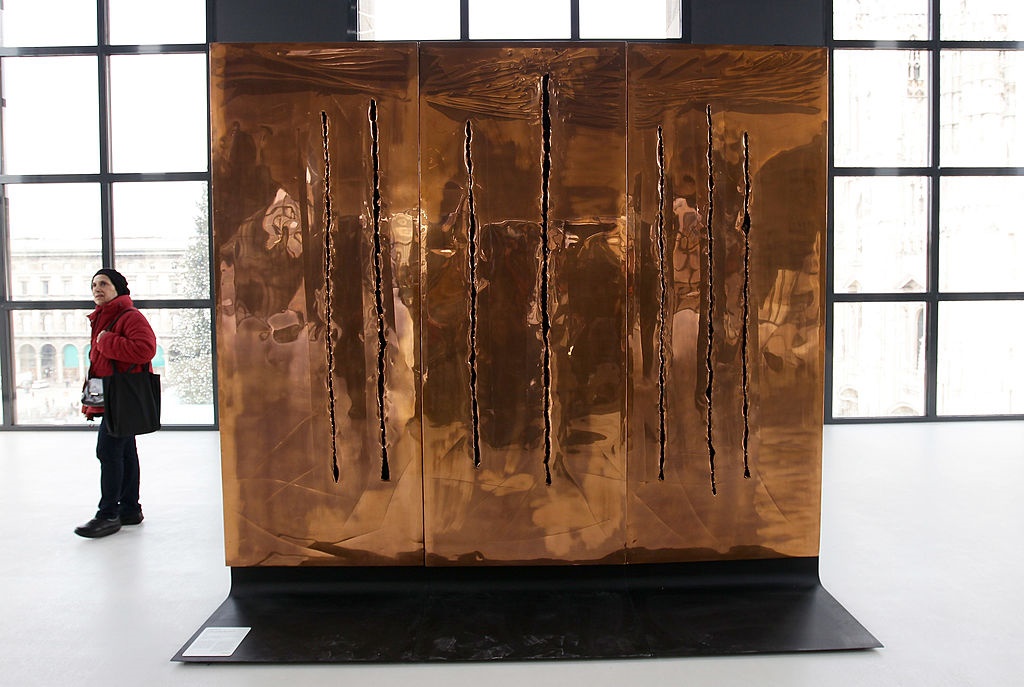The 7th of July stands out as the anniversary of the death of one of the major Italian contemporary artists, Lucio Fontana, who passed away on the same day in 1968.
Mr. Fontana has definitely become the symbol of a refined art, very intellectual and not easy to grasp at first. The “Spatial Concept. The end of God” (1963) is his major work of art and it can be admired at the London Sotheby’s, which bought it in 2013 for 15.941.000 pounds. This afore mentioned work is nothing but outstanding and it can be regarded as a sort of business card of Lucio Fontana: majestic dimensions and the subversion of traditional concepts of proportions and perspectives.
Fontana’s paintings are often characterized by irregularities and relieve giving the idea of a work of art which aims at entering in a direct contact with its surrounding space. For the same reason, Fontana’s canvases are usually coloured, cut, stretched in a very unusual way.
Not everybody would know that Lucio Fontana inherited the artistic talent from his father, the sculptor Luigi Fontana. The family was based in Argentina when Lucio was born in 1899 but in 1905 the young Fontana was sent to Italy to his uncle. Milan is the place Fontana began his artistic apprenticeship at his father’s office. Following his father’s specialty, in 1922 Lucio started studying sculpture at the Brera Academy in Milan and continued even after his family moved back to Argentina.
Fontana soon joined the artistic group Paris-based “Abstraction-Création” and debuted with his first exhibition of abstracted art in 1935 in Milan. After a period in Argentina where he establishes the private Academy Altamira also publishing his White Manifesto in where he states his rejection of traditional materials, Fontana goes back to Italy in 1947 and established the “Spatial Movement”, with deep thoughts that draw him closer to the futuristic vanguards.
Follow @castaritaHK

